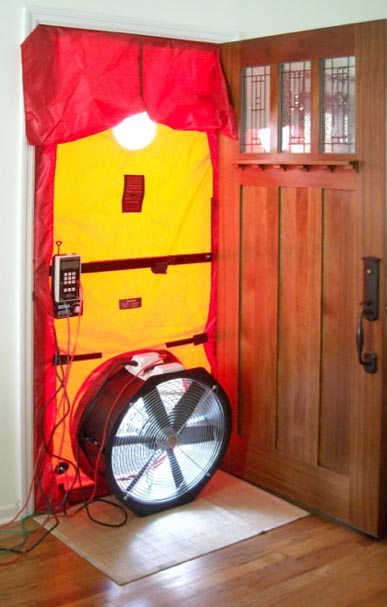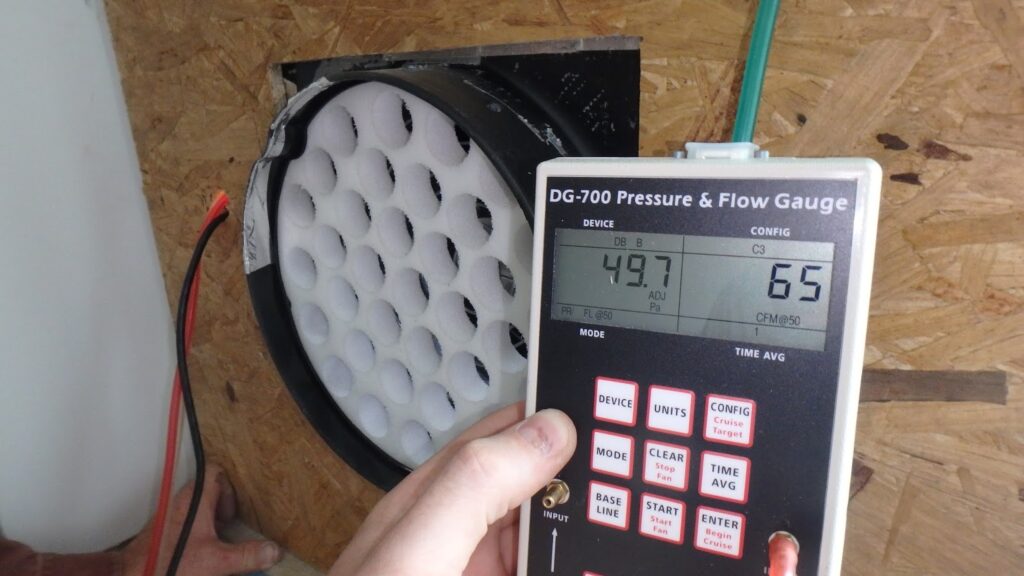All the houses Sisler Builders has completed have tested with ACH50 that is less than 1.0. But what does that mean? What is ACH50? Get ready for some physics!
What is ACH50?
ACH50 is the abbreviation for air changes per hour at 50 pascals (Pa) pressure differential and is one of the most important metrics we use to determine the energy efficiency of a house. It is the number of times the air volume in a building changes per hour at 50 Pa of pressure. During a blower door test we depressurize a building to negative 50 Pa pressure, with regard to the outside air pressure. We accomplish this by continuously exhausting a measured volume of air from the building with the blower door, while simultaneously measuring the pressure differential from inside to out. We adjust the bower until we reach our target pressure differential of negative 50 Pa, and then record the volume of air being exhausted to accomplish this in cubic feet per minute (CFM). This measurement is called the CFM50 of the building and quantifies the air leakage of the structure being tested. The higher the CFM50, the leakier the building.
CFM50 is the building performance standard used almost universally to quantify building air leakage, but it is not a very useful number for evaluating how “tight or leaky” a building is, unless we know a little more about the structure. For example, a giant warehouse may be quite tight, but have a high CFM50 compared to a small house that is quite leaky, because of the enormous discrepancy in the volumes of the two buildings. In order to compare the relative “leakiness” of separate buildings we need to account for this potential difference in structures’ volumes. To do this we use both the CFM50 and volume to calculate what is called the ACH50 – air changes per hour at 50 Pa pressure differential – of the structure. This number indicates the number of times in one hour the total volume of air in the entire building will be exhausted through the blower door when it is maintaining -50 Pa pressure differential with regard to the outside air pressure.
The CFM50 tells us how many cubic feet of air are being exhausted from a building every minute to reach -50 Pa. To calculate ACH50 values we multiply the CFM50 number by 60 minutes per hour to determine how many cubic feet per hour are being exhausted. Now we divide this product by the total volume of the building in cubic feet and we know how many times this volume will be exhausted in on hour at this pressure. Voila. The ACH50 values!
A building’s ACH50 number indicates how tightly a building was originally constructed (or later air-sealed) and is an excellent gauge for comparing leakiness between buildings. The lower the ACH50 values, the tighter the building. Vermont’s residential energy code currently requires new houses to have an ACH50 of 3.0 or less. By comparison, many older houses we’ve tested have ACH50 numbers of 10 or more, and some have been much, much higher. Today’s high-performance houses typically have ACH50s closer to 1.0. All the houses Sisler Builders has completed have ACH50 of less than 1.0.







